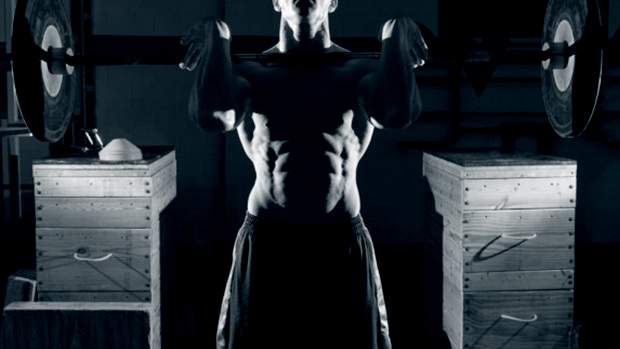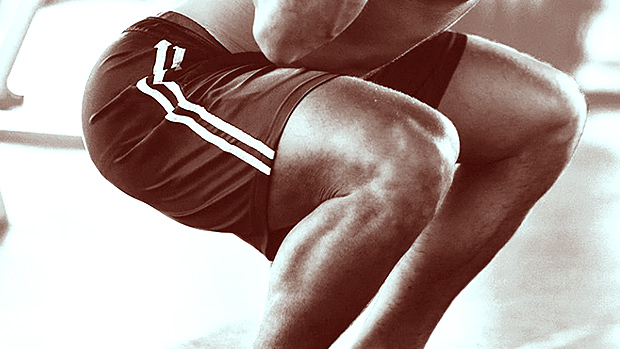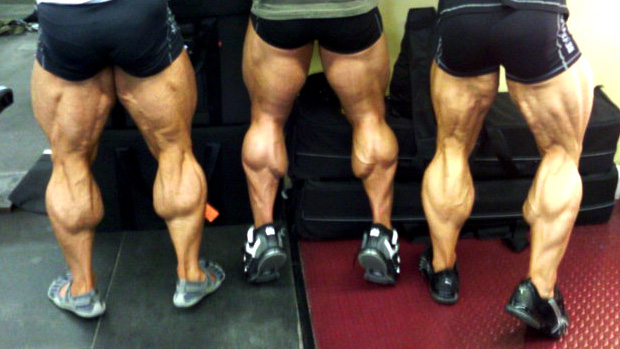All forms of training have a risk-to-reward ratio. Do the benefits outweigh the injury risks? With some forms of exercise, yes. Others, no. And sometimes, the training style is beneficial but the weekend warrior just isn't ready for it... yet. Check out this list of the riskiest forms of activity.
If you want to be an athlete, you better damn well work on smooth, explosive, and mechanically sound sprint training. But sprinting as a means of fitness is now becoming popular with the general public. If you aren't an athlete whose livelihood depends on top end speed in a competitive sport, it's important to assess your training goals and be brutally honest about your general physical preparedness.
The Risk
You have to "earn" the right to sprint. Near maximal effort sprinting is a physical activity that must be earned over time with proper progressions of training stimuli to not only receive benefit from the training itself, but also to decrease risks. This isn't an activity that someone decides to start on a whim, unless they're fond of debilitating, deep purple bruising all over their hamstrings.
Due to the dynamic nature of sprinting at maximal speed and acceleration, the average person who's not conditioned for the requisite muscular performance parameters (and the ability to coordinate synergistic joint and regional interdependence) has an inherent risk of injury.
As for injury rates in competitive sport, many non-contact soft-tissue injuries can be associated with sprinting, even in an athletic population that considers sprinting a less novel activity. Just think of how you'd stack up against a burst-speed and acceleration session after sitting all day and not having cranked it into high gear in years. Chances are, not very well.
The Reward
The upside to sprint training can be awesome. But you'll need good programming and you'll need to maintain your orthopedic and soft-tissue health for a long enough period of time to reap the benefits.
Sprinting is associated with a powerful systemic anabolic response that steady-state cardio can't give you. Sprinting is also one of the most efficient activities to maintain and even enhance soft-tissue quality and pattern activation. By using near end-range extremity positioning patterns along with the maintenance of strong dynamic and reactive stabilization patterns of the pillar, sprints can link up the kinetic chain and keep the neural tone of active tissues unlocked and utilized.
Better movement, more efficient maintenance, and a hormonal cascade that gets you jacked in the process. Yeah, this is something you want to prioritize in training.
Smart Use
Build a base for sprinting. Use a linearly periodized "starting sprinting" program based first on the treadmill then progressively moving to the road, track, or field. Monitor your sprint speed and feel of the movement to improve your gait pattern.
Start the treadmill speed slow, and keep the sprint intervals very short. Start off with anywhere from 6-15 seconds. Because you're focusing on perfect running form and not battle-testing your endurance, start every sprint only when you're close to full recovery. Tack on a few tenths of a mile per hour each week, and in the matter of a few months, you'll have maxed out the treadmill speed and can move your sprint work outdoors.
Olympic-style lifting is the most dynamic form of maximally loaded movement in sport and fitness. From the Olympics to the CrossFit Games, the O-lifts are an impressive display of brutal power. Back in the day, these lifts were mainstream. Athletes and lifters of all specialties were using the Olympic lifts to enhance explosiveness, performance, and even just to achieve a strong and powerful look.
In recent years, high performance athletes along with the general fitness population (not counting CrossFit) has started to shy away from the big dynamic barbell movements, especially in the commercial gym setting. Why? The risk-reward ratio could no longer be justified.
The Risk
Let's just call it what it is: Olympic lifting is the most highly technical form of resistance training known to man. The skill component far surpasses the strength and power component.
Improving movement efficiency and motor patterning and activation is always something to strive for in any exercise. But where Olympic lifting for the average Joe gets a little shaky is when it's added to shoddy foundational movement patterns.
Most lifters will never show up with the innate ability to master a squat or hip hinge pattern and own that movement to the point of adding an explosive component into the mix. Does that mean the average Joe shouldn't deadlift or squat? Hell no. What it means is that improving these two foundational movement patterns takes time, concentration, focus, and thousands of clean and crisp reps – all aspects of training the average gym-goer lacks.
Without the ability to knock out the foundations, adding speed and complexity to barbell movements is a recipe for disaster. As a movement becomes more complex in nature, it inherently becomes more risky. And as a movement becomes more explosive and is executed at faster rates, the body has less time to coordinate dynamic and static stability patterning.
The Reward
Unless you plan on competing in the Olympic lifts in areas such as CrossFit or the sport of Olympic lifting, it's tough to justify adding the snatch and clean & jerk into regular workouts. There are many other options that can produce similar results while minimizing the risks.
That being said, for athletes who live and die on the ability to master these movements to improve their sport performance, there's something special that happens when you place 100% of your focus on improving two movements, and doing everything within your power to see results. Focusing on competition brings out the best in people, and it forces them to adopt practices like mobility work, improving regeneration techniques, cleaning up sloppy secondary programming, or even locking down a diet that will bring them closer to adding poundage to the bar.
Having a clear and defined goal can be powerful for athletes and regular folks alike. Improving your skill and strength can keep you on track. But unless you plan on stepping on the platform, find other reasonable ways of attaining those goals, especially if they're centered around general fitness and body composition.
Smart Use
Where is the middle ground when it comes to implementing explosive barbell movements into your workouts and doing so safely and effectively? And no, just shying away from tough technical lifts that can improve your athleticism isn't an option.
Intelligent S&C coaches are using the weight room as a place to both maintain and enhance health and function. They're once again using explosive, Olympic-style movements. Olympic style? Yes, not actually executing the snatch and the clean & jerk, but derivatives of these movements such as a dumbbell snatch, hang clean, and many other variations. Used correctly, these can be a very effective and safe form of explosive strength training.
If you're new to the Olympic lifts, work into these patterns slowly, and keep progressing your form. If you never get to the actual competition lifts, fine. At least you stayed healthy in the process.

Plyometrics: One of the most bastardized forms of training by the general public. It's poorly programmed, pitifully executed, and its purpose has been grossly misinterpreted. This has made plyometric-based training downright dangerous.
It seems as though every boot camp, group fitness class, and metcon-based fitness program has started to incorrectly utilize jumping and its many variations as an intensity technique. Fact: Proper plyometric training is the furthest from a conditioning tool as it can get.
The Risk
Programming sets of 50 box jumps for time at the tail-end of a workout doesn't produce any performance results, and will eventually lead to injury, even to some of the best athletes in the world. Ask Julie Foucher.
Plyometric training involves a high degree of central nervous system stimulation and performance on top of adding a speed and stretch shortening cycle to foundational movement patterns such as the upper body push, hip hinge, and squat patterns. Even when programmed intelligently, if an athlete presents with notable dysfunctional movement abilities in a bodyweight environment, adding a speed component while increasing ground reaction forces through the kinetic chain can really bring dysfunction to the forefront, predisposing injuries secondary to training.
The best example of this type of training gone terribly wrong is the popularization of "ACL Injury Prevention Programs" that have been targeting youth athletes. After years of seeing an increased incidence of non-contact ACL tears, especially in populations that took part in preventative programming, it was clear that there was something falling through the cracks.
Here's the deal: These prevention programs were utilizing components of plyometric training on top of dysfunctional movers, thus predisposing these athletes to poor biomechanics and patterning. What does this show? Even when being coached, putting explosive speed components on top of athletes who can't execute the basics is a very efficient way to cause injury.
If young athletes (who have fresh soft-tissue and joint structures free of chronic injuries) who sprint, lift, and run daily, are having trouble with this form of training, where do you think you compare at your age and past orthopedic history?
The Reward
The proper use of plyometrics in conjunction with strength, power, and hypertrophy-style resistance training can really create some amazing atmospheres for epic performances under the bar. The idea of post activation potentiation isn't just some mystical training method that only works for elite athletes to increase sprint times. It has a wide application that can help many people seeking general fitness.
By activating or "potentiating" the nervous system with strategic plyometric-based training before doing a max effort lift, lifters can enhance gross muscular performance, gaining a more notable training stimulus in terms of velocity of the loaded movement or the amount of weight used in a set.
You can instantly improve your performance by adding a few key methods to the exercises you're already doing. Sounds pretty cool, right? It's not as technical as it sounds.
Smart Use
Try ramp-up sets instead of plyometrics. Using a number of sets to linearly work up in load to your working sets, while concentrating on explosion of the lighter loads in the first few sets, can really prime your central nervous system for performance. Here are the details.
If you want to go crazy with it, you can also program a supra-maximal final ramp-up set with a heavier load on the bar than your first working set. Crushing a heavy single before getting into your regular strength and size-focused working sets can do some amazing things to your neural output and your mental state. Give it a try and reap the instantaneous benefits.
What's more American than reliving your high school glory days with a game of pick-up football every Sunday morning with the boys? How about jumping in on a few games of hoops to "get your cardio in" multiple days a week? The idea of playing sports to enhance fitness levels is just downright dangerous. You don't play sports to get in shape; you get in shape to earn the right to play sports. Ignore that, and you could sustain life-altering injuries.
The Risk
I'm a sports performance physical therapist who works with everyone from elite athletes to weekend warriors. Keep that in mind before you get too angry about this next statement: There isn't a more risky activity than pick-up sports.
"But playing sports is part of being a well-rounded athlete and testing your physical limits!" Yes, but I've seen enough preventable injuries to populate the roster of every team in the NFL – injuries caused by sheer stupidity and ego driven activities. The first thing you must think about before hitting the field or court is the risk-reward ratio.
Athletics is the highest form of physicality known to man. Power, speed, endurance, flexibility, agility, and skill all synergized into one activity creates a very novel "training" environment for your body literally every time you step onto the field of play.
As you combine more and more physical attributes together in one form of physical activity, that activity becomes more and more variable in nature, creating a more risky environment in general. There's a reason why pros get hurt at the rate they do. They're getting paid millions of dollars to stay healthy and they still have a hard time doing it!
If you sit at a desk 8-plus hours a day and haven't moved laterally in fifteen years, maybe pick-up basketball isn't the best idea as a form of cardio. Haven't jumped or come relatively close to that type of movement in recent years? Going up for a layup with another out of shape motor moron running into you on the baseline isn't the best recipe for success.
There's a reason why athletes train in a specific manner for their sports, challenging the different requirements needed in every facet of the game. Yes, it's to enhance performance, but it's also to wear down that novelty factor of sport. It's to experience as much sport specific stimuli as possible before jumping into competition. If you aren't able to do that, then you best stay on the cardio deck.
The Reward
If your life is driven by beating down a bunch of young kids and showing them that the old guy still has it, your reward for lighting an orthopedic fire under your ass may be justifiable. If that feeling of self-justifying accomplishment keeps your ego driving forward for a few days and makes you a better person, rupturing that Achilles tendon may be worth it... if you have insurance.
Physically speaking, there are alternate means of increasing heart rate, perspiring, challenging your ability to be dynamic, change directions, and coordinate a skill set that keeps your central nervous system functioning at a high level.
Smart Use
Most of the time, the problem isn't you; it's the combination of nine other out of shape people just like you that are going to predispose you to injury.
Skip the pick-up game and build up your movement library until you can run, jump, change direction, and perform at a high level for an extended period of time. Get back on the court after you've tested out the waters of the sport. But if general fitness, maintaining your orthopedic health, and doing so for the long run is your goal, let's just say to skip the game and live to function another day.




